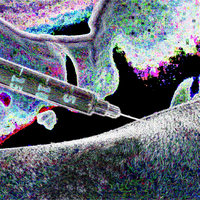| Theobromine | |
|---|---|
| Molecular structure via molpic based on CDK |
| Physical properties [] | |
|---|---|
| Molecular mass | 180.16 g/mol [1] |
| Density | 1.522 g/cu cm at 20 °C; relative density: 1.522 at 20 °C g/cm3 [1] |
| Appearance | Monoclinic needles (/crystalline structure is/ lamellar twining on 001 /axis/) from water [1] |
| Taste | Bitter tasting alkaloid [1] |
| Melting point | 675 ° [1] |
| Boiling point | Sublimes at 554-563 °F (NTP, 1992) [1] |
| Decomposition | Hazardous decomposition products formed under fire conditions - Carbon oxides, nitrogen oxides (NOx). [1] |
| Solubility | less than 1 mg/mL at 64 °F (NTP, 1992) [1] |
| Predicted LogP | -0.8 [1] |
| Structural Identifiers [] | |
|---|---|
| Molecular formula | C7H8N4O2 [1] |
| IUPAC name | 3,7-dimethylpurine-2,6-dione [1] |
| SMILES | CN1C=NC2=C1C(=O)NC(=O)N2C [1] |
| InChI | InChI=1S/C7H8N4O2/c1-10-3-8-5-4(10)6(12)9-7(13)11(5)2/h3H,1-2H3,(H,9,12,13) [1] |
| InChIKey | YAPQBXQYLJRXSA-UHFFFAOYSA-N [1] |
| Pharmacokinetics[] | |
|---|---|
| Elimination half-life | 6–8 hours |
Theobromine
Theobromine (also known as 3,7-Dimethylxanthine, Diurobromine, Theosalvose, Santheose, Teobromin, Theostene, Thesodate, Thesal, 3,7-Dimethyl-3,7-dihydro-1H-purine-2,6-dione or Theobromin) is a
Chemistry
Stereochemistry []
Theobromine is a achiral mixture
 Anodyne
Anodyne